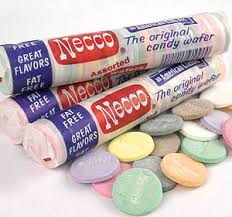I have been doing a lot of reading of history, deep into European history from the middle ages to present, as well as a pretty deep dive into US history. Sparked by a conversation with a colleague in Europe who was showing me where many historical events happened in Frankfurt-Mainz during a day of sightseeing on a trip last year. It reminded me that I knew very little about actual European history, apart from what little is covered when studying the US Colonial period.
I find that in my facebook friends feed, I have several people who are dedicated Tea Party adherents, and they love to toss out quotes from the founding fathers in support of their beliefs. However, I find that many of these quotes are so far out of context that they are contorted into precisely the opposite of the original intent. Additionally, it is clear that these folks have a pretty thin knowledge of US history, likely what they learned in secondary (high) school.
I of course had Civics in highs school as well as the required US History curriculum, and I lived happily ever after … until in my 3rd year of college I took a university level US history course. My eyes were opened. The high school level course was superficial, and outright hid/lied about many of the formative events throughout the history of these United States. The curriculum was clearly molded to make America appear to be a beacon of all that is right in the world, and that she never, ever did anything wrong. But America is made of men, and men do many dumb, and unsavory things. Much of this came out in a fairly unbiased text when I was in college. I have additionally read a few different historians to broaden my knowledge and understanding, and I remain just as skeptical of the claim that the USA is the most, bestest, and complete beacon of freedom in the world.
Unfortunately, as I stated at the beginning of this post, the Tea Party believers/adherents in my circles seem to have halted their study of history and political affairs after that biased high school history and civics course.
To truly understand the writings and intents of the founding fathers, you need to understand much more than just a high school history and civics education. You do need to understand what was happening in the world at that time, and leading up to that time, and then you will have a very different appreciation of the words written in the federalist papers, and the other formative documents of the revolution, the Declaration of Independence and the Constitution. Jefferson certainly had in mind the lessons of the 30 year war, and how state sanctioned religion tears apart the fabric of society. How the rigid class system with ~ 5% nobility, 10% clergy, and the rest being serfs tied to a landlord. How systems of revenue generation of states by increasingly squeezing the serf population with taxes, while exempting both the higher classes.
There is much more context, and turmoil in continental politics, and people who want to have an understanding of the forces and fires that forged the American experience ought to take the time to read up on the history that preceded the revolution, and the subsequent development of our constitutional republic.
Some sources that are good reads:
European history – A complete history of Europe from the middle ages to the present – by John Merrimack – Professor of history, Yale
American history – Daniel Boorstin has a series of very approachable books that are worthy, and chart the evolution of the Americas from early colonial times through the 20th century.
I will probably not accept any comments, as I really don’t want to get into ideological rants. I just hope that I spark a few people to look more at what was happening around the time of the formation of the USA and how we fit into the world of that time, and how we have changed to where we are today.




